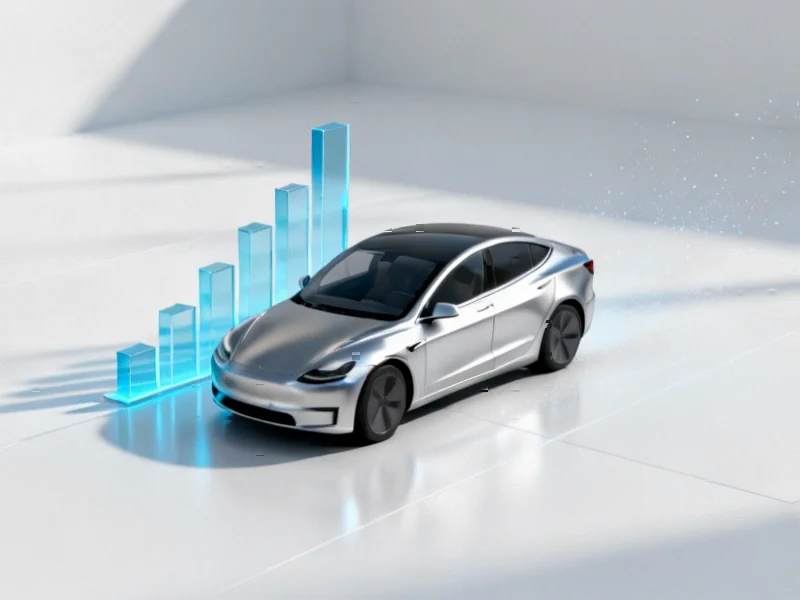According to Phys.org, University of California, Irvine scientists have developed a groundbreaking method to measure greenhouse gas emissions using radiocarbon analysis of turfgrasses. The research, published in the Journal of Geophysical Research: Atmospheres, was led by Earth system science professor Claudia Czimczik and former doctoral student Cindy Yañez, who tested the approach across Southern California’s urban and rural regions. The team combined radiocarbon measurements in managed turfgrasses with atmospheric carbon dioxide data from instruments provided by Los Alamos National Laboratory’s Manvendra Dubey, focusing on regularly mowed lawns to ensure samples represented consistent two-week growth periods. This method successfully captured Los Angeles’ unique “carbon dioxide domes” created by surrounding mountains trapping emissions, though researchers noted the need to test it in cities with different meteorological conditions. This grassroots approach could fundamentally change how cities track their decarbonization progress.
The Democratization of Emissions Monitoring
What makes this approach revolutionary isn’t just the science—it’s the accessibility. Traditional greenhouse gas monitoring requires expensive, fixed infrastructure that many municipalities simply cannot afford. The turfgrass method represents a potential paradigm shift toward distributed, low-cost monitoring that could be implemented by cities of any size or budget. Imagine community science programs where residents collect grass samples from parks, schools, and residential lawns, creating a high-resolution emissions map without multi-million dollar investments in monitoring stations. This approach builds on the team’s earlier pandemic-era research where volunteers collected invasive grasses, demonstrating that citizen science can produce professional-grade climate data. The scalability here is enormous—from neighborhood-level assessments to regional comparisons, all using existing urban landscapes as natural sensors.
Transforming Urban Climate Policy
For city planners and climate officers, this technology offers something previously unavailable: verifiable, localized data on whether specific emissions-reduction policies are actually working. When a city implements a new public transportation initiative or building efficiency standards, they’ll now have a method to measure actual atmospheric changes within months rather than waiting for annual regional reports. The two-week sampling window means cities could theoretically track the impact of short-term interventions like car-free days or major events. More importantly, it creates accountability—residents and policymakers alike will have tangible evidence of whether climate commitments are being met. This could accelerate municipal climate action by providing immediate feedback loops and helping cities identify which strategies deliver the greatest emissions reductions per dollar spent.
Validation and Scaling Challenges
While promising, the method faces significant validation hurdles before widespread adoption. The Los Angeles basin’s unique topography creates ideal conditions for measuring concentrated emissions, but cities with different wind patterns and geography may present challenges. Researchers will need to establish calibration standards for various climate zones, urban densities, and grass species. There are also questions about how factors like fertilizer use, irrigation practices, and soil composition might affect radiocarbon uptake. The scientific community will need to develop standardized protocols and quality control measures to ensure consistent results across different municipalities. Additionally, the relationship between grass growth rates and atmospheric conditions requires deeper understanding—particularly in regions with seasonal dormancy or variable mowing schedules.
Beyond Carbon: The Broader Potential
This research opens doors to broader applications of urban biomonitoring. If turfgrasses can track carbon emissions, other plants might monitor different pollutants—from heavy metals to industrial chemicals. We could see the development of “urban biosensor networks” using existing vegetation as continuous environmental monitors. The approach might also be adapted for agricultural regions to track emissions from farming practices or for industrial corridors to monitor facility-level compliance. As cities worldwide commit to net-zero targets, having affordable, scalable verification methods becomes increasingly critical. This technology could become part of the standard toolkit for climate reporting, much like weather stations are for meteorological data, transforming how we understand and manage our urban environments.
The Road to Widespread Adoption
Looking ahead 12-24 months, we can expect to see pilot programs in diverse cities testing the method’s robustness across different climates and urban layouts. Research institutions will likely establish certification standards and training programs for municipal staff. The real breakthrough will come when cities begin incorporating turfgrass data into their official climate reporting and policy decisions. Within two years, we might see the first cities using this method to make data-driven adjustments to their climate action plans. The long-term vision includes integrating these biological measurements with satellite data and traditional monitoring to create comprehensive urban emissions tracking systems. As climate accountability becomes increasingly important for funding, regulation, and public trust, this grassroots approach could become an essential tool in the urban climate toolkit.




